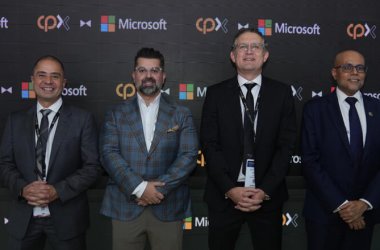 Microsoft recently rolled out Windows Server 2012 R2 Preview. The update for Microsoft’s flagship server OS includes a number of features to improve and enhance managing virtual servers with Windows Server 2012.
Microsoft recently rolled out Windows Server 2012 R2 Preview. The update for Microsoft’s flagship server OS includes a number of features to improve and enhance managing virtual servers with Windows Server 2012.
Virtual servers are crucial for small and medium businesses. Most SMBs don’t have an IT department or data centre to work with and need tools that simplify management and allow them to operate an entire IT infrastructure from a single box. Virtual servers allow businesses to maximise the value and productivity of their investment in hardware.
With Windows Server 2012 R2 Preview, Microsoft has streamlined the performance of Hyper-V. Replication between virtual servers is faster, and more frequent, and Microsoft has added more disaster recovery options. The new Hyper-V also allows you to assign QoS (quality of service) to prioritise disk access for virtual machines that need it more, such as a database server.
Linux VMs
One of the best improvements in Windows Server 2012 R2, though, is the enhanced support for Linux virtual machines. Previous versions of Hyper-V have technically supported Linux, but the capabilities were very limited.
Windows Server 2012 R2 adds support for remote replication of Linux virtual machines for disaster recovery purposes and gives SMBs much more flexibility to manage Linux VMs. You can reallocate memory resources, or resize the virtual storage on the fly without requiring a reboot of the virtual machine. Backup software designed to work with Hyper-V can also back up Linux VMs in Windows Server 2012 R2.
Next-Gen Hyper-V
Another significant update in Hyper-V with Windows Server 2012 R2 Preview is the addition of Generation 2 virtual machines. The traditional–Generation 1–virtual machines essentially emulate a Pentium II server architecture, complete with PCI and ISA buses, an IDE controller, and old school BIOS.
The virtual hardware was chosen to ensure Hyper-V virtual machines could run basically any available operating system, but that architecture is outdated. The new Generation 2 virtual machines sheds the legacy hardware elements in favour of a more modern 64-bit architecture that operates on UEFI rather than BIOS.
Windows Server Essentials Experience
Microsoft designed Windows Server 2012 Essentials with SMBs in mind, but the entry-level server platform doesn’t support Hyper-V virtualisation. Fortunately, Microsoft has a solution for small and medium businesses that wish to embrace server virtualisation.
Windows Server Essentials Experience (WSEE) can be installed as a server “role” in Windows Server 2012 R2. It provides a simplified management console called “Dashboard” that makes it easier for SMBs to manage their environment, while also allowing them to take advantage of Hyper-V.
Microsoft has dubbed Windows Server 2012 the “Cloud OS” because it’s designed to connect on-premise servers with cloud-based services. Windows Server 2012 R2 makes it even easier for SMBs to effectively straddle the line between local and cloud by providing more powerful tools for managing virtual servers.





